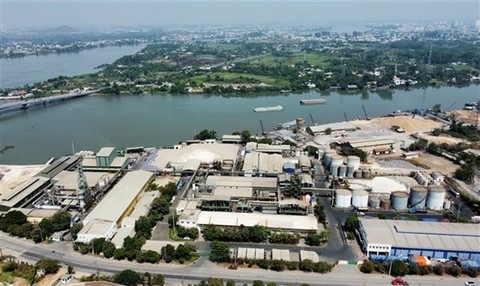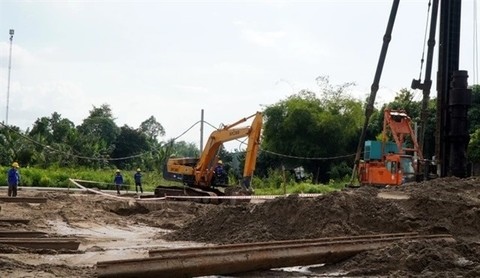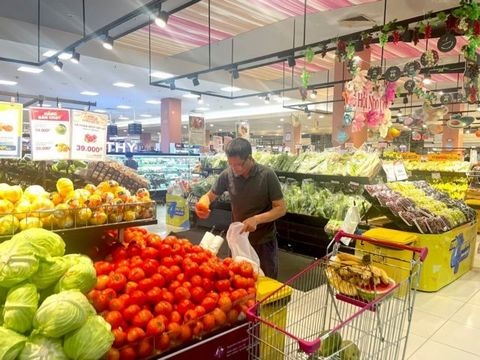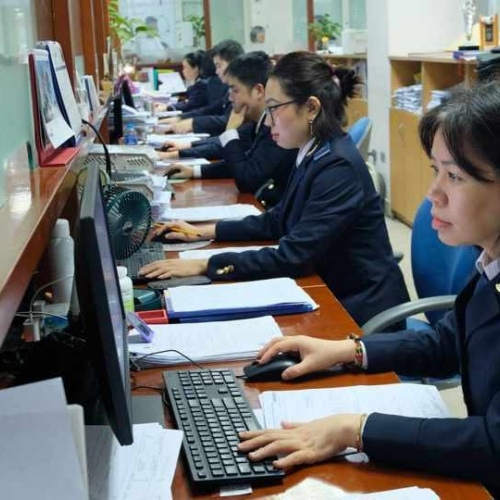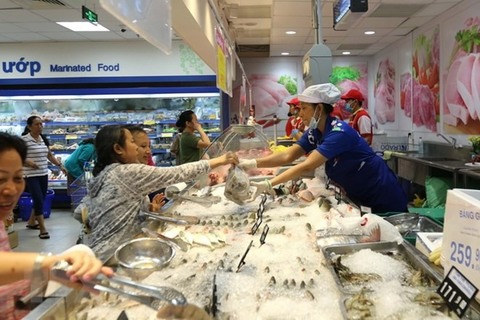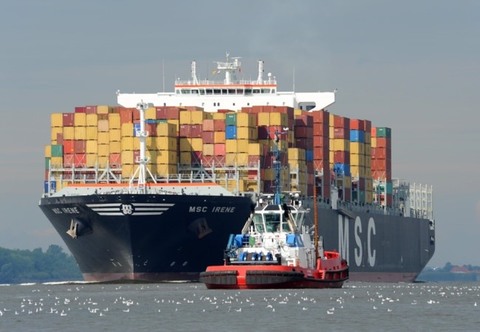Vietnam remains a potential market for Japanese investors
Vietnam remains a potential market for Japanese investors
VIR has talked with Eximbank’s Mochizuki Masashi, senior director of Japanese Customers, and Yutaka Moriwaki, board member, senior director, and head of the Eximbank Restructuring Project, to gain a closer look into investment trends and the Japanese bank’s strategic investment.
Slower foreign direct investment (FDI) flows from Japan in the first quarter do not worry Japanese banks who have invested into local banks to cater to Japanese investors and businesses in Vietnam. At Eximbank, which is backed by Sumitomo Mitsui Banking Corporation, things are turning sunnier with great expectations on FDI inflows from Japan and plans coming together to pump up the bank’s performance.
When Tokyo-based Sumitomo Mitsui Banking Corporation (SMBC) made its first investment in Eximbank in 2008, it aimed to extend support and financial services to Japanese customers in Vietnam. Is SMBC satisfied with its results so far?
Since the beginning of the strategic partnership, the two banks have built a cooperation structure to support Japanese customers in Vietnam. In principle, Japanese customers are introduced by SMBC and we have enjoyed opportunities to conduct transactions with these customers. In return, we provide banking services which SMBC cannot provide in this market, such as retail services.
Consequently, this synergistic collaboration can create added values for Japanese customers and helps attracting more Japanese customers to conduct transactions in Vietnam through SMBC.
In the first quarter of this year, Japanese investment in Vietnam has reportedly fell behind South Korea, Hong Kong, and Singapore. As a strategic partner of a local bank that provides corporate advisory and financial services to Japanese investors, do you worry about investment flows? What are the reasons behind this slowdown in FDI?
In accordance with the statistics disclosed by the General Statistics Office of Vietnam (GSO), Japanese FDI flows were behind Korea and Singapore.
However, as shown below, Japanese FDI produced great results in 2017, and the first quarter only makes up a small portion of the total FDI capital.
Considering this, it is too early to pass judgement on the entirety of 2018 just yet, and we are not concerned about this “downtrend” of Japanese investment.
In recent years, many Japanese companies have increased investments in agriculture, retail, and financial services in Vietnam in a marked turn away from manufacturing. What has Eximbank done to meet the demands of these companies?
In addition to conventional banking services, we have launched a variety of services to meet our Japanese customers’ demands, and supply chain financing is one of our focus programmes which will support not only Japanese investors, but also local suppliers, distributors, and end-users across a variety of industries, including food, agriculture, and retail.
Following the increasing trend of direct investment, we have started our support programme for Japanese Direct Investors, and this programme can streamline investment procedures and help achieve more investment in a variety of industries, including financial services.
As a strategic partner of Eximbank, what has SMBC done to provide technical support as well as to enable the bank to meet Japanese standards on corporate governance, quality, and risk management?
Since the investment in 2008, we have a Strategic Alliance Agreement aimed at mutually complementing the know-how and experience of SMBC in wholesale and retail banking, corporate governance, and other banking business.
Could you share more about SMBC’s business strategy in Vietnam?
I cannot speak for SMBC, but from Eximbank’s perspective, we appreciate the personnal and expertise sent by SMBC to support our initiatives, including the current “New Eximbank” project.
In 2017, we focused on fixing foundational problems at Eximbank, such as restructuring our human resources, building a mid-term strategy, and reorganising Head Office to enhance support to our sales network.
In 2018, we will start implementing the mid-term strategy.
Could you share more about Eximbank’s mid-term strategy?
Eximbank has recently set up a mid-term strategy. Among several initiatives, one example of SMBC’s support is enhancing trade finance solutions for corporate clients by special product skills as well as SMBC’s overseas network to regain the “Export-Import Bank” brand name.
The board of directors (BOD) has approved the mid-term strategy earlier this year. Our goal is to regain the leadership position in certain segments to be a leading commercial bank in Vietnam.
In business, along with the 20 per cent asset growth target, we plan to improve the Net Interest Margin and fee businesses, such as the bancassurance, credit card, and settlement business. SME/MME is the core customer base where we selected ten focus industries to provide more customer-oriented products and services, while we will also enhance business with large domestic and foreign corporations, leveraging our trade finance solutions.
For internal control, we will upgrade our IT network to improve critical features such as Customer Relationship Management (CRM) and Management Information System (MIS), as well as credit risk management. In order to improve the productivity of our operations, we will also centralise operations.


